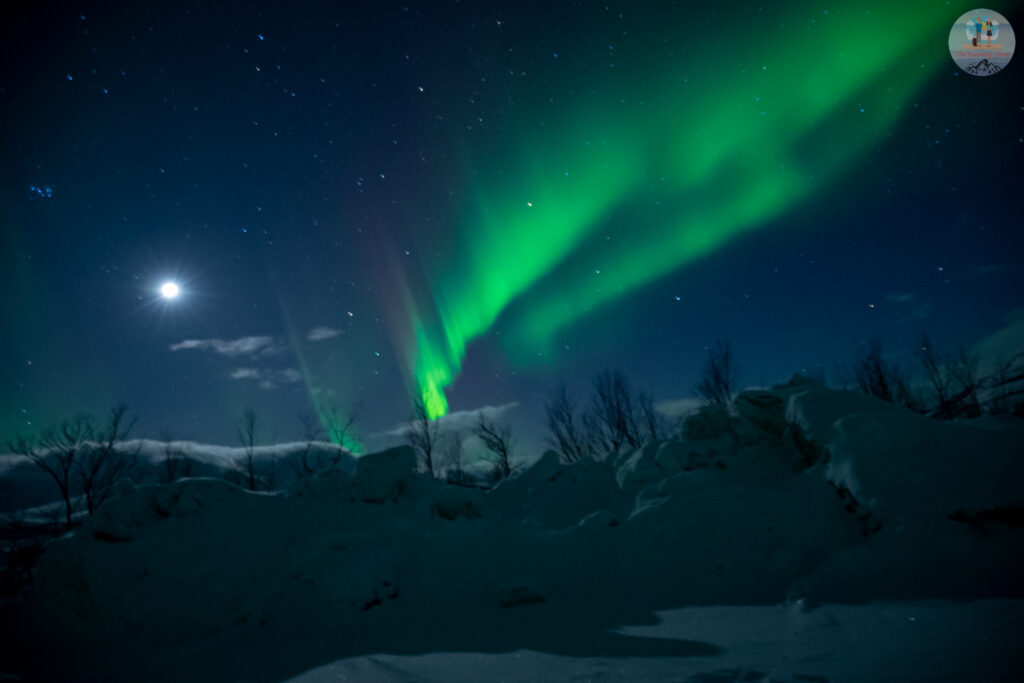Let
me say this loud and clear – the Northern Lights, or Aurora Borealis, are pure magic. No photo
or video truly ever captures what it feels like to witness them dance across
the sky. And the more you see them, the more they pull you in, like an
addiction. Our local guide, who had seen countless Auroras in his lifetime, was
so overwhelmed that he dropped everything, laid down in the snow, and laughed
uncontrollably, gazing at the sky in awe. Yes, literally!
And
for us – we hugged and shed tears of joy seeing the streaks of pink and green
spread across the sky in a celestial dance. But here is the thing – the Aurora
is elusive and unpredictable. May be that is why it’s often called Chasing the
Northern Lights. And chasing this elusive wonder takes
planning, patience, and a bit of luck. From our experience through Norway and
Finland, here’s a complete guide with tips to maximise your chances of seeing
the Northern Lights and photographing them.
Best time to see
the Northern Lights
Late September to
March is considered the best time to see the Northern
Lights. Even though there are chances to see it during the initial days of
April, I would not rely too much on it due to days getting longer. That
said, Aurora activity tends to peak around the equinoxes –
thanks to increased geomagnetic disturbances during those times. So, if you’re
planning your trip, try aligning it close to the spring or autumn equinox for
better chances.
5
Tips for Planning your Northern Lights trip
Choose
places with higher Aurora sighting history
While
planning your trip, do not just go with traditional tourist places. Instead,
try and add one or two offbeat places to your itinerary that have a history of
good aurora sightings. This was the reason why we added Kilpisjarvi in Finland
to our itinerary. This remote town close to the Norway border is directly under
the aurora oval and as per statistics,
offers the chances to see aurora on 75% of the nights. We stayed there for 2
nights and on the second night we could see a breathtaking show that lasted for
hours. There are some other places in Lapland which offer great aurora
sightings, choose which fits well into your itinerary.
Stay
at least 3 Nights at Prime Locations
Chasing
the aurora isn’t about covering ground, it’s about giving yourself
time in the right places. The longer you stay, the better your odds.
That’s why a 2-3 nights stay in one location is ideal – it gives you
the buffer you need against unpredictable weather or low aurora activity.
We
learnt this first-hand in Tromso, considered one of the best places to see the
Northern lights. Out of our 4 nights there, we went aurora
hunting on two – and only one rewarded us with a
stunning aurora display during a guided tour. The other night, the clouds
refused to budge even after hours of waiting. In Kilpisjärvi, we saw
both extremes: one night was swallowed by a snow blizzard, but the next
evening opened up to clear skies and gifted us a breathtaking, full-sky
aurora show. So yes, that’s the point I was trying to make.
Book
Accommodation away from the City Lights
Staying
a little outside the city definitely boosts your chances. You’ll be away
from light pollution, under darker skies, and might even catch the aurora
without stepping out. This saves the trouble and cost of going on Aurora
tours which are definitely not cheap. We could see the Northern lights right
from our rooms in both Kilpisjarvi and Inari. Especially for
Inari, looking at the magical sky in the middle of a frozen lake
away from everything else was unlike anything else. Read More….

